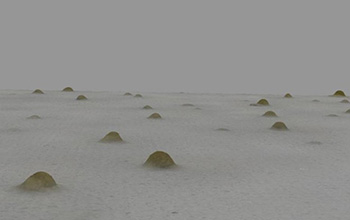Microbes cooperate to construct structures called fruiting bodies when famine strikes

When food is scarce, forest-dwelling bacteria come together to build structures.
Forest-dwelling bacteria known for forming slimy swarms that prey on other microbes can also cooperate to construct mushroom-like survival shelters known as fruiting bodies when food is scarce.
Now, a team at Princeton University has discovered the physics behind how these rod-shaped bacteria, which align in patterns like those on fingerprint whorls and liquid crystal displays, build the layers of these fruiting bodies. Results of the U.S. National Science Foundation-funded study were published in Nature Physics.
"In some ways, these bacteria are teaching us new kinds of physics," said Princeton physicist Joshua Shaevitz. "These questions exist at the intersection of physics and biology. And you need to understand both to understand these organisms."
Myxococcus xanthus, or Myxo for short, is a bacteria species capable of surprisingly cooperative behaviors. For example, large numbers of Myxo cells come together to hunt other bacteria by swarming toward their prey in a single undulating mass.
When food is scarce, however, the rod-like cells stack atop one another to form squishy growths called fruiting bodies, which are hideaways in which some of the Myxo cells transform into spores capable of rebooting the population when fresh nutrients arrive. But until now, scientists haven't understood how the rods acquire the ability to begin climbing on top of each other to build the droplet-like structures.






